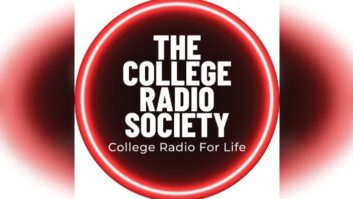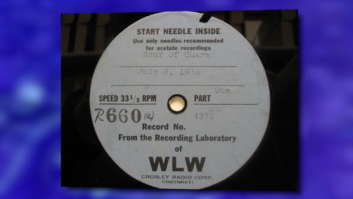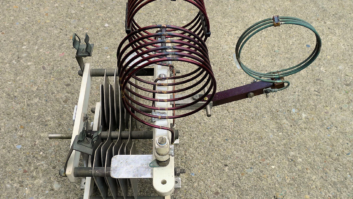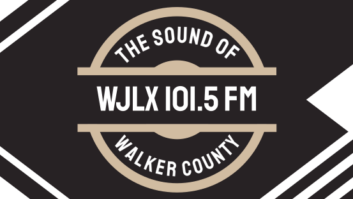In radio’s battle to redo its image from old to new media, an ally often overlooked is the consumer electronics community.
I’m prompted to reflect on this by a recent supplement published in TWICE, which is now one of our sister magazines at NewBay Media. The brochure offers a different perspective on radio’s place in the market and the evolving perceptions about it in the consumer electronics community.
The publishers sensed a business opportunity to produce this supplement on the theme “Radio in the 21st Century.”
The supplement is an advertising piece, thus its entire tone is upbeat; the purpose was to sell radio-related devices, and the content is by no means a scientific sampling of thought on the topic. But I was drawn into reading it.
Unlike articles or supplements you’ve seen in RW or other broadcast sources, the content was aimed at the professional consumer electronics marketplace; its text and ads are written by or for electronics manufacturers, retailers and other people in CE circles.
So what are those folks saying about radio right now?
Today’s radios
“A new generation of listeners are changing the ‘good, old radio,’” the introduction states.
“Visit a top online retailer, plug in ‘radio’ and you’ll be surprised at what pops up. Among the top sellers are Apple nanos. Along with the ability to play MP3 files, the popular portables have built-in FM tuners so people can listen to their favorite stations as well as downloaded tracks. The nano adds a special feature to radio listening: live pause. You can even rewind as far back as 15 minutes.”

Ads like these from Grace, iHome and iBiquity show how manufacturers are promoting the many forms of ‘radio’ to their retail channels. The writers describe the breadth of radio-related devices you can buy: “Classic combination CD clock radios, CD/AM/FM models for the kitchen, iPod docks with built-in FM tuners, even $1,000 A/V receivers that play satellite radio stations.” Weather-band portables are in demand. Sirius/XM is strong in the car and recently posted its highest number of subscribers, they note.
Further, HD Radio receiver sales are “trending close to 3 million devices sold.” CEA head Gary Shapiro is quoted saying the digital radio technology “is advancing in all segments — in traditional devices such as tabletop radios, iPod docks and A/V receivers, and in new segments for AM/FM-like MP3 players, PNDs and cellular handsets.” He said digital receiver sales are “growing rapidly” and that HD Radio receivers are “commanding a value premium over analog radios.” Shapiro calls HD the “next CE digital wave.”
Internet radio meanwhile is making itself felt in retail sales thanks to broadband penetration in U.S. households as well as the spread of Wi-Fi.
Pandora, Slacker, iheart Radio, AOL Radio and Sirius/XM Premium Online are “much better organized and let consumers personalize their playlists.” Manufacturers have made it easier to connect to wired and wireless streams. “The problems from the early days of Internet radio are really behind us,” analyst Ross Rubin of the NPD Group is quoted saying.
The smartphone revolution too has “changed the face of traditional radio.” Users of iPhones, BlackBerrys and Android devices can stream audio. Meanwhile, at home, more televisions have Ethernet and Wi-Fi connections that can enable Internet radio. The authors give an example of a Toshiba Net TV that allows the user to access Pandora Internet Radio accounts using a remote, and compares this to the more passive listening experience of cable audio channels.
Integration
Supporting this magazine supplement with ads were manufacturers like iHome, which makes Internet radio products compatible with the iPod/iPhone; Grace Digital Audio, offering Internet radios and an accompanying iPhone remote control app; and iBiquity Digital, promoting HD Radio’s “advanced services” like Program Service Data, iTunes tagging, live pause and images of artists.
Also advertising were Sirius/XM, hawking its new SkyDock, which lets a listener access the service in their car via iPod touch or iPhone; and D&H, a distributor that stated, “The popularity of radio and its complementary products is apparent at D&H: sales of home and portable audio … have climbed nearly 40 percent year over year,” thanks in part to the integration of radio functionality in other media-based devices like MP3 players and cell phones.
I was impressed and pleased. Perhaps I’ve been subjected to too much negativity about radio, but I found the content — “salesy” though it was — refreshing.
The tradition-minded will say, “Some of these services are not even ‘radio.’” But that’s part of the point for me. The very meaning of “radio” for consumers and retailers is changing. I’ve said this before; this brochure is a vivid reminder.
Like it or not, our industry consists of more AM and FM over-the-air signals. If we don’t change our own thinking about that along with the market, we unnecessarily limit ourselves; we exclude radio’s businesses and our own careers from potentially exciting growth.
The smartest broadcasters have figured this out and are integrating themselves into this sprawling, growing consumer market.
The article included an upbeat note for traditionalists: “The meat and potatoes for retailers are the millions of AM/FM clock radios sold every year. CEA estimates close to 13 million home and clock radios will be purchased in 2010,” with sales of about $277 million.
“This doesn’t even include the 10 million-plus MP3 speaker docks, many of which now include FM tuners and alarm options. This category remains hot, with CEA projecting an almost 8 percent increase in sales.” Home radios with MP3 player docks made the top 10 list of fastest-growing products last year, according to CEA. Here and throughout, the lesson for radio people in this is the theme of integration.
Again, the purpose of that ad supplement was to help retailers get fired up about selling product, so I share all this with that understanding. But it’s notable to me how TWICE and its advertisers approached this topic. They are not saying that these offerings replace radio, but that radio is improving.
“Clearly radio’s shape and technology have changed dramatically over the past few years,” the authors concluded. “It’s the wise retailer who welcomes this, as it offers unimagined sales opportunities for a new generation of listeners.”
It’s the wise broadcaster — and pod-, satellite-, stream- and multi-caster — who pays attention.












